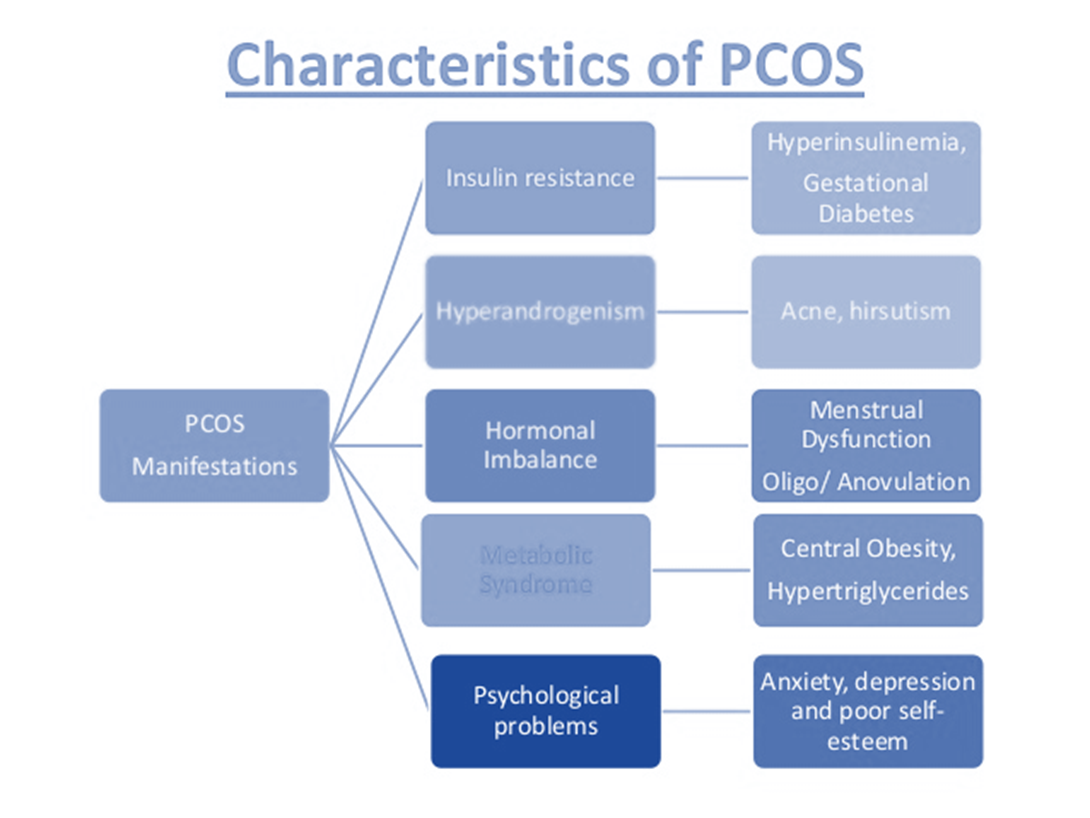Poly-Cystic Ovarian Syndrome (PCOS)
Content
Poly-Cystic Ovarian Syndrome
• Definition
• Criterion
• Pathophysiology
• Clinical Features
At the end of this lecture, students will be able to –
• Define PCOS
• Explain the Pathophysiology of PCOS
• Describe the criterion and clinical features of PCOS
Polycystic Ovary Syndrome (PCOS)
Stein and Leventhal
First to recognize an association between the presence of polycystic ovaries and signs of hirsutism amenorrhea (oligomenorrhea, obesity)
Polycystic Ovarian Disease
After successful wedge resection of the ovaries in women diagnosed with Stein-Leventhal syndrome, menstrual cycles become regular and the patients were able to conceive (polycystic ovarian disease)
Poly-cystic ovarian syndrome
Biochemical, clinical and endocrinological abnormalities have shown an array of underlying abnormalities; hence condition known as polycystic ovarian syndrome( PCOS)
Syndrome ”O”
• Ovarian confusion
• Ovulation disruption
• Over‐nourishment
• Overproduction of insulin
Criteria of the PCO
• Presence of menstrual abnormalities and anovulation
• Presence of clinical and/or biochemical hyperandrogenaemia
• Ultrasound examination – peripheral cysts (10 or more) less than 10mm in size in an enlarged ovary with significant increase in the central stroma
Ø Absence of hyperprolactinaemia or thyroid disease
Ø Absence of late-onset congenital adrenal hyperplasia
Ø Absence of Cushing’s syndrome
Etiology of PCOS
• Neuroendocrine derangement
– ↑LH relative to FSH
• Hyperinsulinemia
– Defect in insulin action or secretion
• Androgen excess
– Ovarian and adrenal
Functional Hyperandrogenism
Pathways leading to Androgen excess in PCOS
• menstrual abnormalities, Infertility “anovulation”, Hirsutism, acne, aloplecia, Increased risk of atherosclerosis & cardiovascular events
• Increased risk of diabetes mellitus in patients with hyperinsulinemia
• Increased risk of endomentreal cancer & Breast cancer
• Hyperlipidemia with its impact on atherosclerotic changes
• Hypertension observed later in life
• Obesity 40% with health risks including saphenous varicosities, hemorrhoids, hernias & osteoarthritis
• Several mental health problems, depression, anxiety
Summary
• Biochemical, clinical and endocrinological abnormalities have shown an array of underlying abnormalities; hence condition known as polycystic ovarian syndrome
• Menstrual abnormalities, Infertility “anovulation”, Hirsutism, acne, aloplecia, Increased risk of atherosclerosis& cardiovascular events
• Neuroendocrine derangement – ↑LH relative to FSH
• Hyperinsulinemia- Defect in insulin action or secretion
• Androgen excess – Ovarian and adrenal
Also, Visit: Pathophysiology Notes






